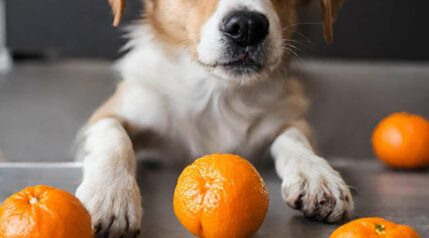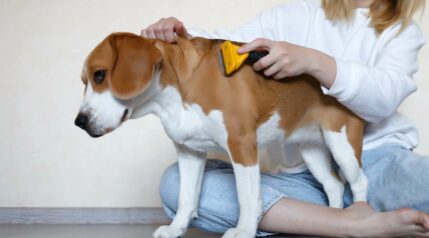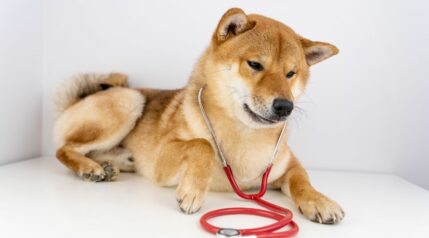There’s no question we love our dogs. In 2020, the U.S. pet industry exceeded the 100 million dollar spending mark for the first time ever!
We show our canine best friends we cherish them by how we care for them, and we believe they adore us, too. It’s hard not to wonder, though, if there could be a way we could know for sure. Is their dedication to us based on love, or is it all about the food bowl?
Fortunately for us, we live in a time when scientific research can show us without a doubt.
History Of Dog Domestication
Although the exact date is still a matter of debate, between 27,000 to 40,000 years ago, humans began to domesticate the wolf population against which they’d been competing for food. These first wolves may have been fed the excess lean protein the early humans could not efficiently utilize. Humans needed other nutrients to survive during the most bitter months of these ice age years. The wolf pups captured and domesticated were likely kept as pets. Initially, sharing food strengthened the bond between the two species and the relationship proved mutually beneficial.
We continue to discover evidence that the human/dog relationship became more than employer and employee. A burial site in the Czech Republic believed to be 32,000 years old shows a striking level of tenderness between early humans and early canines. It contains a dog buried with a bone placed carefully in his mouth, apparently after his death. In Germany, radiocarbon dating places around 14,300 years ago, the burial of a disabled dog alongside the bodies of a man and a woman. These ancient archeological sites are casting new light on how much we began to mean to each other as early as the late Stone Age. Dogs were our companions before people were living together in organized cities.
Science-Based Emotional Bond

More than the archaeological record supports the connection between people and pups. Emory University in Atlanta conducted a study using MRI technology that looked at dogs’ brain activity to determine what triggers their emotional responses. The methodology of the experiment was simple. The scientists exposed the dogs to an array of odors while monitoring what was going on in their brains. They theorized that they might be able to see which types of odors triggered the greatest response in the dogs’ brains.
The experiment used odors to stimulate the canine brain. The researchers at Emory measured the neural responses of dogs as they were exposed to the odors of humans and other dogs, both familiar and unfamiliar. Dopamine, the “feel-good neurotransmitter,” is released when the brain expects something pleasurable. The scent of their owner was what most strongly triggered dopamine receptors in the brains of the dogs in the experiment. The same thing happens to people when they see a picture of someone they love.
As humans, we experience our world largely through how we see it. Our vision is our most highly developed sense. Dogs, on the other hand, rely more on smell than on sight. We’ve even selectively bred certain breeds, like the Bloodhound, for this trait. What can return you to a moment in childhood quicker than a fleeting whiff that reminds you of a holiday gathering at your grandmother’s house or summertime play outside on a newly mowed lawn? Dogs, like humans, have an emotional response to smell.
Sight As A Way To Connect

Research also shows that dogs have evolved in such a way the same processes that create the strongest social bonds in humans, like the bonds between mother and child, are triggered when dogs interact with us. When dogs and humans gaze into each other’s eyes, the bond we feel is not in our imagination. It’s in our chemistry.
Gazing steadily and with trust into each others’ eyes causes both canine and human brains to secrete the “love hormone” oxytocin. This hormone is mainly responsible for creating the bond between new mothers and their babies and between other mammal pairs. This study is the first to show oxytocin at work in both members of different species. Over the thousands of years we have been living in close proximity with and interacting with dogs, this bond has been evolving.
Positive Reinforcement & Praise

Any pet owner knows that positive reinforcement is the way to go when you’re training your dog. Fortifying desired behaviors with something your pup craves will help him want to repeat it. Around 1860, an English businessman who watched dogs being fed leftover ship’s biscuits saw an opportunity and created the first dog biscuits. The dog treat industry gave us a convenient way for us to show our dogs how much we love them and reward their good behavior.
With pet obesity such a widespread problem today, you may have wondered if the best way to reward our best friends is with a food treat or with praise. You’re not alone. Dr. Gregory Berns of Emory University decided he may have a way to find out. He wondered if dogs really adore us or do they see us as the ones delivering the food. Getting the dogs into the MRI was still going to be a challenge, and the dogs needed to remain still and calm. Researchers enlisted a local dog trainer to help.
Once the volunteered dogs were trained, Berns and his colleagues used delayed gratification experiments similar to those used on people. They created an experiment with a stimulus that was sometimes negated with a no go command. If they responded correctly, the dogs were rewarded. They rewarded the dogs with hot dogs part of the time and with praise part of the time. Slightly more than half of the dogs responded to praise and food equally, and twenty percent responded more strongly to praise than food. Berns concluded that the majority of dogs do love us at least as much as they love food. They prefer our praise over food for a job well done.
Ways Dogs Show They Love Us
We’ve seen the science that proves it, but really, didn’t we already know? Dogs have so many ways of showing us they love us, and all we need to do is pay attention. Any species has “body language” that expresses a range of emotions. All we need to know is how to read it. Not sure how to read your dog’s body language? Here are some ways your dog will show you that he loves you through his actions.
He’s Happy To See You Come Home

Most of us leave home daily to work or run the errands necessary to keep our household functioning. Where we go, our best friend may not always be welcome. The moment we arrive home, however, is the sweetest time of day for our dogs and pretty great for us, too. There’s no doubt our pups are celebrating the reunion – to the point it seems they sense we’re on the way before we arrive.
Thanks to the same acute sense of smell that makes his heart beat faster when he detects your scent, your canine companion is able to tell how long you’ve been gone and estimate how long it will be before you arrive home. If your schedule is predictable, the scent you leave behind dissipates, and your dog can tell. He is able to recognize the level of scent remaining when you typically return and comes to associate that level with your impending arrival. Between this and the fact that his amazing ears may be able to hear your car approach or your footsteps far down the hall, we know he has been anticipating this moment since you headed out.
He Wants To Be With You

You may notice that your best friend is right there with you as soon as you get up from your chair to get a cup of coffee. If you head to the laundry room, he’s there to help. Even when you head to the bathroom, there he is. The root of this behavior traces back to the canine pack instinct. The pack sticks together for safety and comfort. And you are his pack.
He Wants To Sleep Next To You

How often do you go to bed, and your pup jumps up beside you? The instinct to sleep with the pack is deeply ingrained in canine DNA. Canines are pack animals in general, and there is safety in numbers. All animals, humans included, are at our most vulnerable when we sleep. Like wild canids sleep together for warmth and safety, our dogs want to sleep next to us because we are part of their pack.
Interestingly, anthropologists have speculated that dogs sleeping alongside humans may be an ancient urge encoded in the DNA of not only humans but also dogs. We know that we evolved together, and as anyone with a small child and a dog has probably experienced firsthand, kids generally want their buddy in the bed as much as their buddy wants to be there.
He Wants You To Play

In packs of wild canids, trusting relationships grow through play. By playing together, the pack establishes dominance hierarchies and divides labor. They learn to hunt, raise young, and defend food and territory from outside attackers. If your pup approaches you and crouches on his front legs while standing on his hind legs, he is giving you a clear invitation to play. Play bows are unequivocal signals. They are clear signs of trust.
He Shares His Favorite Things With You
When your pup approaches you with the toy you always use to play tug, or he brings you his favorite fetching ball, you may infer that he wants you to play. However, he may bring you his toy and place it down in front of you. He wants to interact, and he wants your attention. Many breeds have the instinct to retrieve because we’ve selected for it over the years. For example, we train Retrievers to retrieve birds downed by the hunter. Our Retriever-type best friends bring us what we toss. Many of our Terrier breeds were created to kill pests like rats. If your Terrier-type brings you his toy, he may fancy himself presenting you with a fresh “kill” he captured.
Final Thoughts
These behaviors are some of the reasons we love having a dog. Having someone wait for us to return and leap about with joy when we do makes us feels good. When we’re feeling low or lonely, having a buddy who wants to play reminds us we’re the most important person in the world to at least one special someone. Our canine best friends remind us that we always have a pack, and we’re never truly alone. Dogs and humans have had each other’s backs for millennia.





